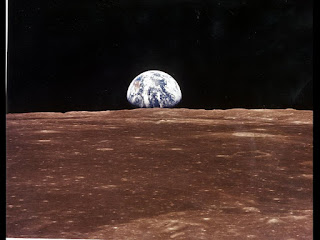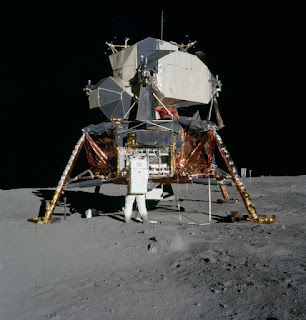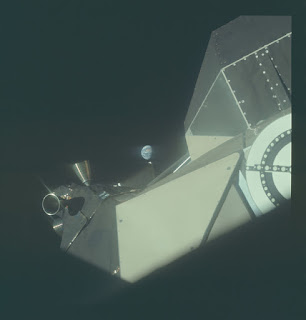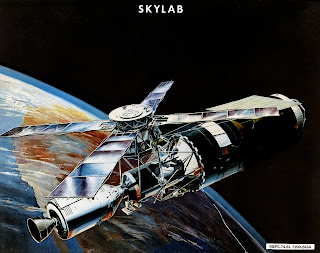Saturn-V for Dummies Part-4: Missions
That's one small step for man. One giant leap for mankind.~ Neil Armstrong
Hello
readers and welcome back, it has been quite a journey exploring the Saturn-V. In
our path, we came across 3 major milestones; 1st one was the history of the development of the rocket, then we got an overview of the whole machine, then we got to know the propulsion system or the engines of the rocket, if you haven’t read them, you are missing out on a tonne, links are
provided go and check it out first.
Hope
you are back after reading all of them. So, welcome back again!!
Today,
we are going to see the missions that the vehicle accomplished. There was a
total of 13 launches of the beast out of which 12 were a success and 1
(Apollo-6) was a partial failure. But, was Saturn-V only used for moon
programs? Let’s dive in and answer the question.
Missions:
Or what was it used for?
2
types of missions required the Saturn-V launch vehicle. Let’s see them one by
one in detail;
Apollo Missions:
 |
| View of the earth from the moon |
As obvious as it is, the Saturn-V was actually made
to accomplish the biblical task of landing humans on the moon.
There were a series of Apollo missions, each with
different objectives that mainly revolved around studying the moon.
We learned in the 2nd article that, the
Saturn-V had 3 stages. However, when we are talking about the Apollo missions,
the rocket would become a 4-stage giant as the command and service module and
the crew escape system got stacked.
The 4th stage contained the Lunar Landing
Module, Service module, and the Command module. The command module contained
the astronauts inside it.
Let’s explore them one by one:
Service Module:
 |
| Apollo service and command module |
The service module is the component that contained all the required cargo for the use of the astronauts traveling aboard. RCS (Reaction Control System) thrusters were used for the spacecraft's yaw, pitch, and roll control. The fuel cells in the service module helped the spacecraft with the crew's electricity supply and water supply. Apart from cargo and other facilities, the Apollo service module sported an earth return engine (AJ10-137) which was used to place the craft in or out of the lunar orbit or perform mid-course correction and perform a de-orbiting burn for the command module to re-enter the earth.
Command Module:
 |
| The Apollo command module |
The command module is the pod stacked over the service module which contained the crew. The Apollo command carried 3 astronauts per single mission. The command module featured RCS thrusters for alignment control, a docking hatch for docking with the lunar lander module, a heat shield for atmosphere re-entry, drogue chutes to slow down the module while descending, the main parachute for a safe descent and splashdown of the module.
Launch Escape System:
 |
| Apollo launch escape hatch |
The launch escape system is the tower above the command module which was used in case of an anomaly during the first phase of the flight. The basic use of a launch escape system is just to take the crew module as far as possible from the rocket during a failure so that the crew onboard doesn’t get affected by the explosion. In the modern SpaceX's Dragon capsules, the LES is inbuild to the module, whereas, in the Apollo command module, the LES was a separate system that relied on solid motors for propelling the module. It was jettisoned once the spacecraft reached out of the earth’s atmosphere.
Lunar module Eagle:
 |
| Edwin Aldrin with the Eagle in Apollo-11 mission |
The lunar module contained a lander can and a moon lander. But we can’t see this module while the rocket launch, this is because it is protected by fairings just under the service module, this is because the module had an extremely non-aerodynamic shape, if left unprotected could have caused flight instabilities inside the earth’s atmosphere and eventual mission abortion. But again, how did the crew get inside the lunar module, well this involved a simple mid-flight maneuver which is called TDE (Transposition, Docking, and Extraction) maneuver, in which the command and service module performs a 90o yaw to align with the lunar module and propel forward to dock and extract the module. The lunar lander included landing legs, thruster, and fuel to land on the lunar surface, the lander-can contained crew members inside it and could separate from the lander to leave the lunar surface.
The lander-can then docked with the command module
where crew transferred from the lunar module to the command module and then the
lander-can is jettisoned.
 |
| Lunar module docking with the Command module |
Then the spacecraft starts the journey back to
earth. The AJ10 engine performed the Earth transfer maneuver and the
de-orbiting burn once the craft enters the earth’s orbit. As the earth descend
phase starts, the service module is discarded and burnt up while re-entering.
The command module entered in a butt-first alignment so that the heat shield was
exposed first in order to convert maximum kinetic energy into heat energy and slowed
the module down. Even after that, the module was pretty fast, hence, the drogue
chutes were deployed to slow it down more before the main chute is deployed.
The mission was considered to be a success if all
three astronauts got back and splashed down safely on the earth.
For ease of time management here is a table** briefly describing the objectives of each mission:
**If there is any problem viewing the table through mobile, kindly click desktop mode of your browser to view the whole table. If you are using chrome, then you will find this option by clicking the three-dot menu at the top right of your screen.
|
Mission Type |
Missions |
Description |
|
A |
Apollo 4 Apollo 6 |
"Unmanned flights of launch vehicles and the CSM, to demonstrate
the adequacy of their design and to certify safety for men." |
|
B |
Apollo 5 |
"Unmanned flight
of the LM, to demonstrate the adequacy of its design and to certify its
safety for men." |
|
C |
Apollo 7 |
"Manned flight to demonstrate performance and operability of the
CSM." |
|
C' |
Apollo 8 |
"Command and
service module manned flight demonstration in lunar orbit." |
|
D |
Apollo 9 |
"Manned flight of the complete lunar landing mission vehicle in
low Earth orbit to demonstrate the operability of all the equipment and
(insofar as could be done in Earth orbit) to perform the maneuvers involved
in the ultimate mission." |
|
E |
___ |
"Manned flight of
the complete lunar landing mission vehicle in Earth orbit to a great distance
from earth." |
|
F |
Apollo 10 |
"A complete mission except for the final descent to and landing
on the lunar surface." |
|
G |
Apollo 11 |
"The initial
lunar landing mission." |
|
H |
Apollo 12 Apollo 13 (planned) Apollo 14 |
"Precision manned lunar landing demonstration and systematic
lunar exploration." |
|
I |
___ |
"Reserved for
lunar survey missions (not used)." |
|
J |
Apollo 15 Apollo 16 Apollo 17 |
"Extensive scientific investigation of Moon on the lunar surface
and from lunar orbit." |
 |
| Eagle leaving the moon captured by the Service module |
We will surely discuss the apollo mission in detail in an upcoming blog, once it is uploaded the link will be available here.
The Skylab Mission:
The Skylab was the first United States space
station. It was launched on 14 May 1973. Now unlike the present International
Space Station, the Skylab was not assembled in parts rather the whole station
was carried to orbit in a single piece by the Saturn-V rocket in its very last
flight. Now the Skylab was not as large as the present ISS, so it could easily
fit in the massive fairings of the Saturn-V! Wait, what! Fairings! Well yes,
not many have seen the Saturn-V with fairings, no problem here’s the picture:
 |
| Saturn-V in Skylab mission |
The Skylab contained a payload shroud, apollo telescope, multiple docking adapter, antilock module, airlock module, and Saturn V instrument unit. This Skylab is now decommissioned though, but when active, the Apollo-Soyuz program used to put humans in the Skylab.
 |
| An Apollo module docked with the Skylab |
After spending 2249 days in orbit and making 34981 orbits around the planet the Skylab was deorbited on 11 July 1979. This happened due to the delay in the space shuttle program. Now get the physics here, not everything is ideal in space, the orbit in which a particular object is placed eventually decays, so the Skylab needed to be re-boosted to continue its orbit (yes, the current ISS also does that). So, by this way Skylab came to an end, it deserves a dedicated article for itself so we’ll surely cover it in the future. But in our next article, we'll conclude this series by answering some fundamental questions like "Why have humans not returned to the moon till now?" So, stay tuned.
If you like our articles then please follow this blog to get the latest updates directly to you (buttons are available in the right sidebar or in the bottom menu bar if you are reading this article on mobile).
To know the basics of the quantum world, astronomy and space exploration you can check out the book "Through the wormhole" on amazon kindle by Ratnadeep Das Choudhury.
Thanks for Reading!!!
-Ayushman Dash












0 Comments